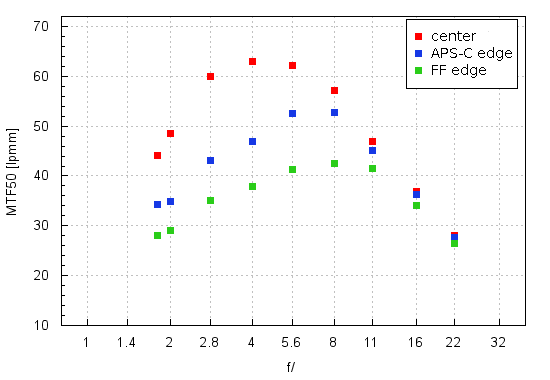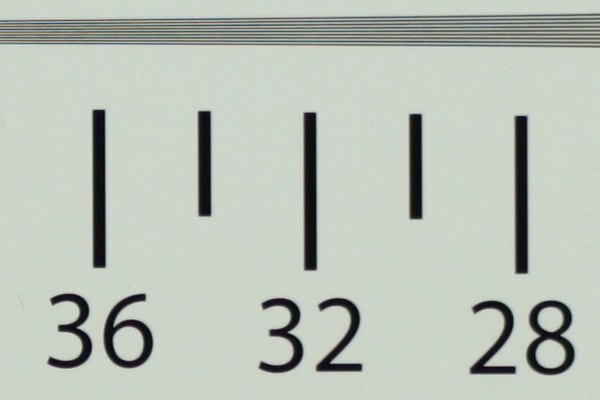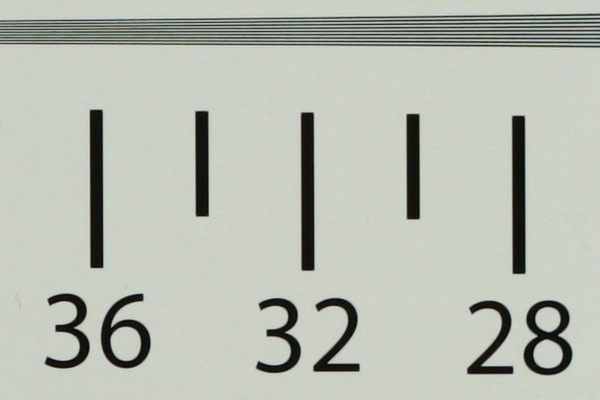Sony Carl Zeiss Sonnar T* FE 55 mm f/1.8 ZA
4. Image resolution
Let’s check how the tested lens compares – its performance in the frame centre, on the edge of the APS-C sensor and on the edge of full frame are presented in the graph below.

Please Support UsIf you enjoy our reviews and articles, and you want us to continue our work please, support our website by donating through PayPal. The funds are going to be used for paying our editorial team, renting servers, and equipping our testing studio; only that way we will be able to continue providing you interesting content for free. |
- - - - - - - - - - - - - - - - - - - - - - - - - - - - - - - - - - - - - - - - - - - - - - - -
The performances of standard f/1.8 lenses with a simple optical construction (meaning systems with not more than 6-7 elements), launched lately on the market, seem to be very much alike. At the maximum relative aperture the image is of medium quality, often near the decency level or even a bit below it; then it improves quickly on stopping down. If you look at the edge of full frame even on stopping down by 1-2 EV stops in some cases doesn’t allow you to get images of good quality.
How does the Sonnar 1.8/55 compare? Very favourably, I don’t hesitate to say. In the frame centre, already at the maximum relative aperture, the lens reaches a result of 44 lpmm so a value firmly above the decency level. It means the images are sharp. It is a performance better than that of the Canon EF 50 mm f/1.8 STM and the Nikkor AF-S 50 mm f/1.8G, practically comparable to the performance of the Tamron SP 45 mm f/1.8 Di VC USD, a lens physically bigger and optically more complex than the tested Sonnar.
The MTF s of the tested lens increase on stopping down so by f/4.0 they reach the maximum resolution, amounting to 63 lpmm. It is perhaps not a record-breaking value but add it to the performance at the maximum relative aperture and you have to admit that you deal with an excellent lens.
When it comes to the edge of the frame the situation is closer to the typical performance of other 1.8/50 class instruments. On the edge of the APS-C sensor the lens has to be stopped down to f/2.2 in order to offer a fully acceptable image; on the very edge of full frame you have to apply an aperture close to f/4.0 to achieve the same result. The Zeiss is able to defeat the Nikkor AF-S 50 mm f/1.8G in this category but it is weaker than the new Tamron SP 45 mm f/1.8 Di VC USD and the cheap Canon EF 50 mm f/1.8 STM, a lens with a simpler optical construction. Like in the case of the Sonnar 2.8/35 FE two factors influenced such a weak performance: small physical dimensions of the lens and problems with telecentricity, connected to a short distance between the rear element of the lens and the huge full frame sensor.
At the end of this chapter traditionally we present crops of our resolution testing chart, taken from JPEG files which were saved along RAW files used for the analysis above.
| A7R II, JPEG, f/1.8 |
 |
| A7R II, JPEG, f/4.0 |
 |






